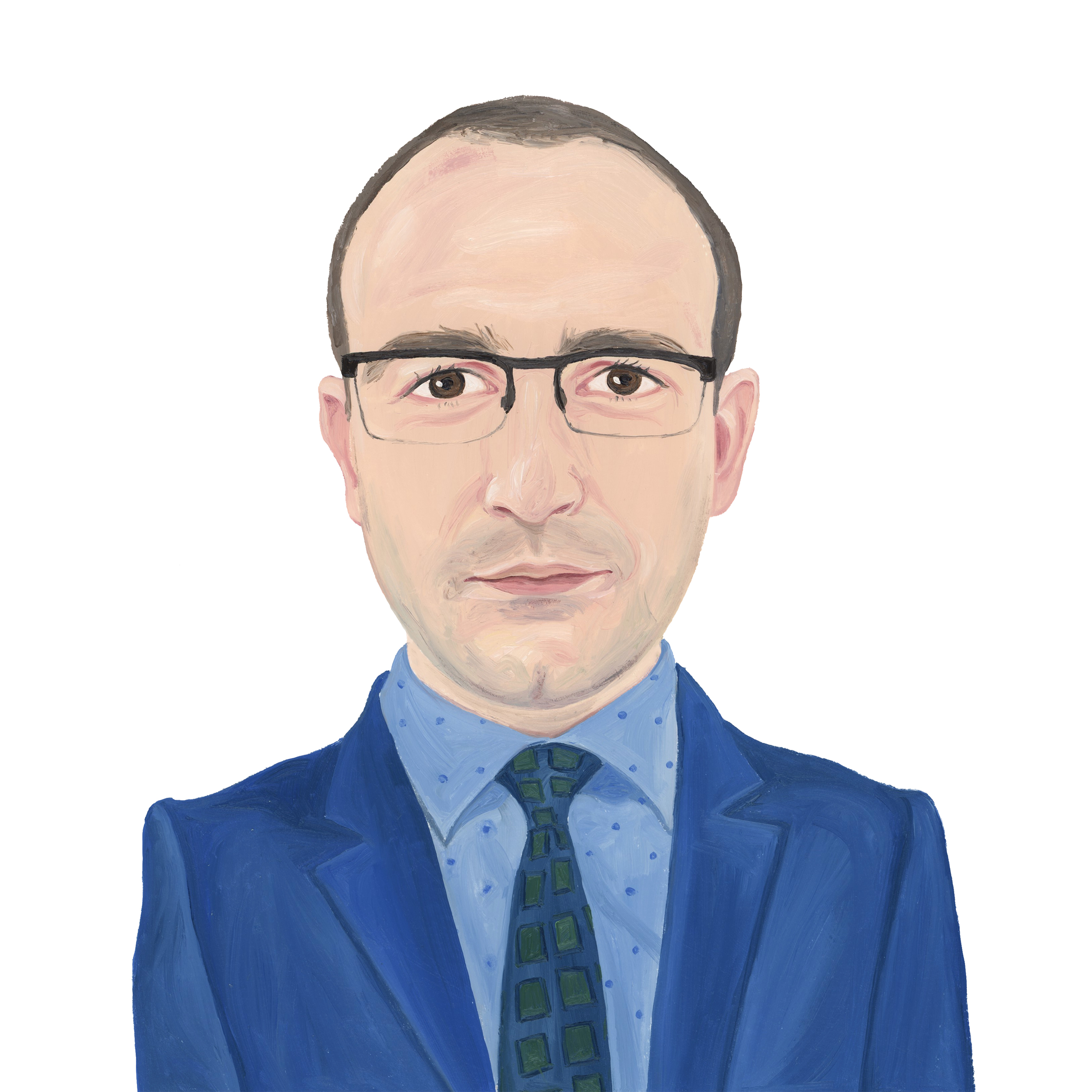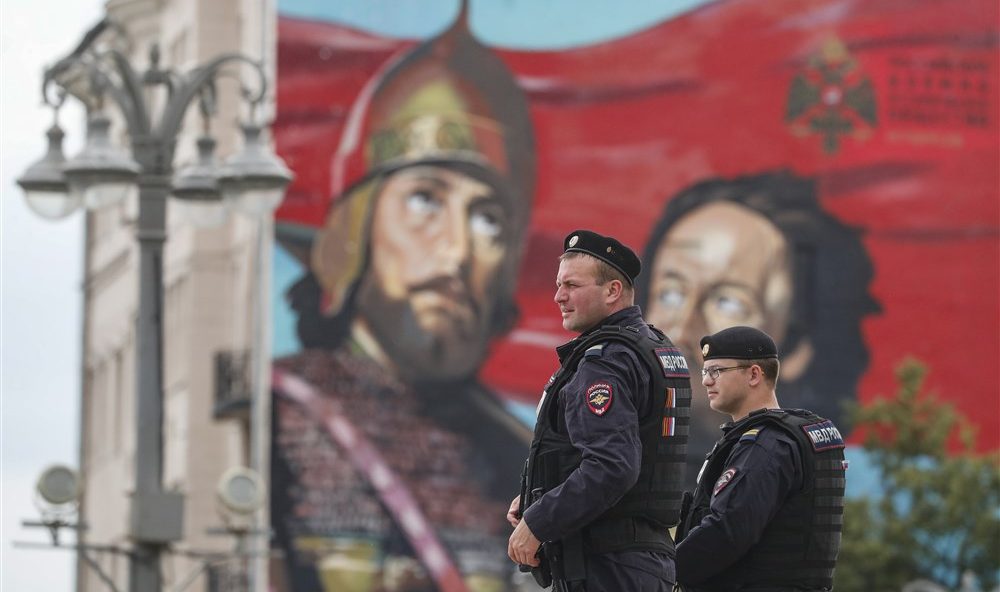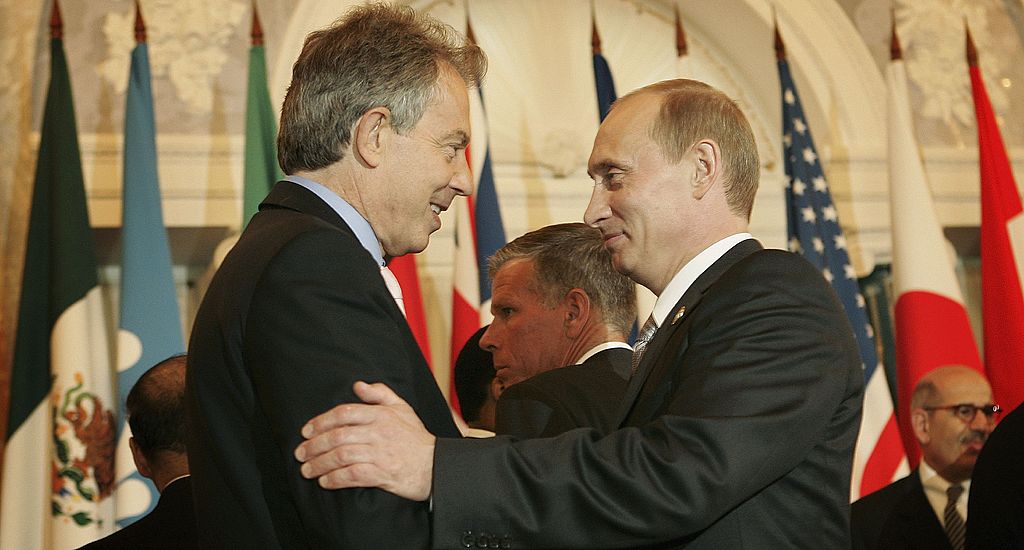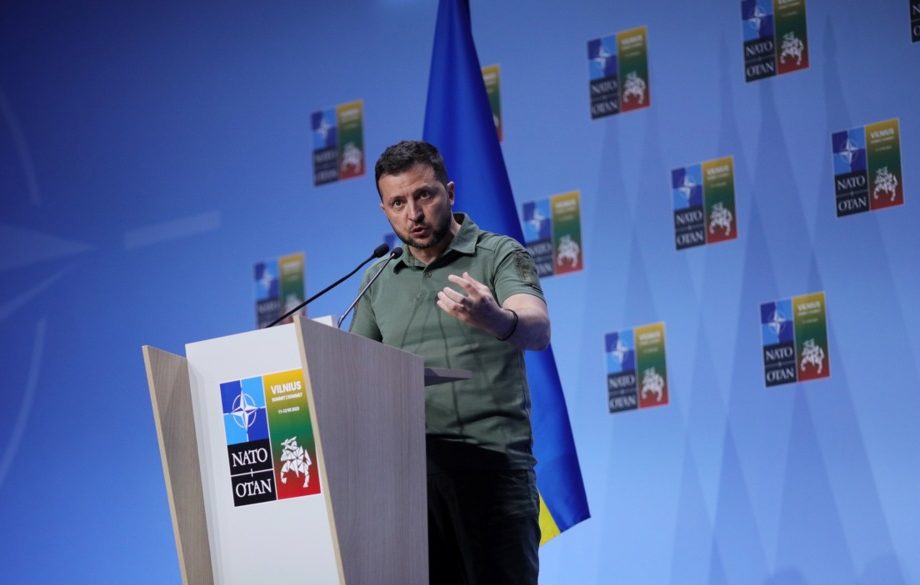Even in the darkest depths of war there has always been, in all ages, some faint hope of peace. It is only human to grasp at any straw, however thin, that offers a prospect of deliverance from the destruction and horrors wrought by the clash of arms.
An enduring armistice may follow from a stalemate at the front, as in Korea; from political collapse as in the First World War; from complete military defeat as in the Second; and from many other combinations of events. Even where the conflict is fought under a policy of unconditional surrender, there is hope in hastening the end or – as Colonel von Stauffenberg and his fellow July 20th, 1944 plotters tried – in resetting the entire scene.
Yet today, in the Ukraine war, peace appears more elusive than ever before. It is also perceived by many as a dirty word that carries a whiff of moral betrayal as regards Ukraine’s heroic fight and sacrifices. In other words, peace is now the immoral ground to be on, and only war allows a righteous claim to virtue – war until complete victory, as defined by either side. Both Moscow and Kyiv have drawn such thick red lines, and have invested so much already, that they cannot make any significant concessions without their respective regimes imploding.
So the fight carries on, despite recent rumours of a potential “backchannel” between the US and Russia, involving Richard Haass, the outgoing president of the Council on Foreign Relations, and Sergey Lavrov, the Russian foreign minister. For the clearest indication that Washington is not interested in any real negotiations look no further than the recent promotion to acting Deputy Secretary of State of Victoria Nuland, an arch-Russia hawk who was at the centre of events during the so-called “revolution” in Kyiv in 2014.
But isn’t there some path to peace, over the next year, say, even in these circumstances? Here are the most likely scenarios, ranging from the near-impossible to the plausible – although in practice all of them are less likely than the depressing, harrowing but most realistic spectre of a generational struggle.
1) Putin or Zelensky leave the stage
Whether through a coup – more likely in Russia’s case – or death, likely natural for Putin, perhaps assassination for Zelensky – either leader could be removed from the picture. Irrespective of the wider circumstances, this would create a political opportunity of some sort for negotiations – in theory. In practice, the strong forces driving both sides in this war, and the current stalemate, would still be at play and nothing much is likely to change.
2) Social unrest in Russia
The weak point in Russia’s war effort is popular support. This apparently remains high, fuelled by effective state propaganda. But Putin will remember the latent power of Russian soldiers’ mothers, whose protests disrupted the Chechnya war thirty years ago; and he will also remember how Russia was forced out of the Japanese war in 1905 and the First World War in 1917 by revolution at home, not just defeat abroad. This is likely a key reason why the Ukrainian conflict is still waged under the guise of a mere “special military operation”. But as Putin is forced to move ever closer to full mobilisation by raising the conscription age, he is also having to deal ever more harshly with the phenomenon of draft dodging.
It is not impossible to imagine a combination of continued heavy losses at the front, increased Ukrainian strikes inside Russia, and perhaps a severe economic downturn driven by inflation, eventually destabilising Putin’s system and the war effort – and thus creating the premises for a peace process. But the Russian state has plenty of means to suppress dissent and to counteract these threats, so the spectre of serious social unrest remains very distant for now.
3) Ukrainian military success
Although Ukraine’s summer offensive has undershot expectations even according to public admissions by US and Ukrainian officials, Kyiv’s military position remains strong and is arguably strengthening.
Firstly, the Armed Forces of Ukraine are now well advanced in transitioning fully to NATO-standard equipment. In tube artillery, they now use 155mm guns on a large scale; the air force is set to receive F-16s; the tank force, currently boosted by a hodgepodge of donated Western vehicles, is on track to permanently changing over to panzers built by Rheinmetall in Ukraine itself. Kyiv’s air defences and long-range strike capabilities have improve and will continue to do so, for example through deployments of Patriot batteries and Storm Shadow missiles, perhaps soon followed by ATACMS.
The ammunition problem is now being effectively resolved through expanded capacity in the US, various European countries, and places like Australia and South Korea. In key sectors of the front Ukraine already appears to enjoy artillery superiority.
Even if Ukraine fails to break through this year, it may still have – in theory – a fair chance of making more progress towards Crimea next year together with inflicting more losses on the Russian Black Sea Fleet. The demonstration of Ukrainian military power that is growing with time rather than receding may change Russia’s political calculus and bring the Kremlin to the negotiating table. However, a great many things must work very well in Kyiv’s favour on the battlefield, and turn out very badly for Moscow, in order for Ukraine to gain a clear military advantage in this struggle.
4) Russian military success
The reverse may yet occur as well. Last year’s reports of the Russian military machine’s death were greatly exaggerated.
After a botched initial assault on Kyiv – which in fact came very close to success – and an inept defence at Kharkov, the Russian army regained its footing. In the field, new fortifications and defence tactics have proven highly effective. Back home, defence production – with help from the likes of China and Iran – has been ramped up, with no sign of Russia being in danger of running out of drones, missiles, shells, tanks or other warfighting equipment. The armed forces are being expanded, with two new armies allegedly being formed.
As always, it is difficult to separate truth from disinformation in Russian statements but as an authoritarian country of over 140 million people with a massive defence industry, self-sufficiency in raw materials, and alternative sources (China) of high-end components, Russia does have the capacity not just to regenerate its field forces but to increase them dramatically over time.
Similar to Ukraine, there is also a best-case military scenario for Russia, in which Kyiv’s current offensive effectively fails with crippling losses which are not replenished quickly enough by a West with low stockpiles, allowing Russia to deliver a massive counterblow in the winter or in 2024, perhaps with a much bigger force than the invasion army of 2022.
Furthermore, Russia may yet retain or have rebuilt its conventional escalatory potential with missile and drone strikes, and a new and expanded missile campaign in 2023/24 could perhaps suppress Ukraine’s logistical network enough so as to enable new Russian successes at the front. If the military tide turns clearly in Russia’s favour along these lines, there is likely to be strong pressure on Kyiv – including from the West – to seek negotiations. The problem, at that point, would be how to convince Russia to stop at all, rather than press its advantage.
5) Western support fades
The recent NATO summit in Vilnius re-affirmed the West’s strong, long-term support for Ukraine. New policies are being put in place at national levels for more defence spending, and even new legislation is being passed – such as the EU’s ASAP act – to bolster Western defences as well as supplying Ukraine’s war effort, given that the two are closely linked.
These assurances and mechanisms may be “ironclad” at the moment, but ultimately they are sustained by political will, and politics can change quite quickly. Next year will see the EU election take place, where eurosceptic parties which prioritise their countries’ national interests might do well; and of course US elections which might deliver an outright Ukraine-sceptic, China-focused Republican president to the White House.
The global economic picture is also darkening, with vast debts, inflation and low economic growth raising the cost of living among Western populations. Assuming neither side gains the upper hand in the Ukraine war and the fighting settles into a costly stalemate with no end in sight, the vast expenses and efforts required to keep Kyiv’s cause on artificial life support could well come under very severe strain in these circumstances, leading to a push for a negotiated settlement.
But in practice it is very unlikely that events will line up in this way. Besides, the fundamental dynamic behind the war – the high geopolitical stakes both for the US and Russia, and the investment they’ve already made in the conflict – together with the currently-insoluble issue of credible guarantees for Ukraine that would be acceptable to Moscow (to ensure a stable peace) mean that politically it is very hard for the West to back out in almost any scenario.
6) China suffers shock
Leaving aside genuine black swan events, the final wildcard with some remote credibility worth mentioning in this scenarios game is a China contingency.
It is not entirely impossible that one of three pathways may open up with little warning. Xi might die suddenly, in which case the Chinese system, which is even more personalised than Russia’s, might undergo a profound policy reset including towards Washington and the Kremlin; naturally, both of these are highly unlikely events.
Secondly, China may experience a massive economic crisis, with its economy long rumoured to be very brittle. This, combined with perhaps a more aggressive US defence and trade policy under a new president, and perhaps with internal political strife – it’s striking how the Chinese foreign minister and the top commanders of China’s nuclear forces all “disappeared” and were officially replaced in recent weeks – may press Beijing into a détente process with the US.
Finally, an outright Sino-American war breaking out over Taiwan would suddenly consume all of China’s energies if not even lead to a major fracturing of its political system in case the war goes wrong.
Any of these three pathways or mini-scenarios would force a de facto break-up or at the very least a dramatic material reduction in Chinese-Russian cooperation and support, with knock-on effects on Russia’s war effort.
It is often forgotten that Moscow is pursuing a global “war” against Western dominance, of which the Ukraine conflict is only one component, and in which Chinese support is vital. Left largely alone in this struggle, Russia’s geopolitical position would be untenable and negotiations with the West would – eventually – be the result. In other words, to bring Russia to heel, one must first suppress China’s global strategy and consequently its support for Moscow.
As things stand, the war in Ukraine seems locked in a depressing, never ending cycle of offensives and counteroffensives, with neither side able to step back and accept negotiations. It is a tragedy, but no amount of simple wishing for peace will bring it about. Changes with practical impact on this military-geopolitical deadlock must occur before peace can return to Eastern Europe. Imagining an alternative future is the first step to bringing it about.
Gabriel Elefteriu FRAeS is deputy director at the Council on Geostrategy in London and fellow at the Yorktown Institute in Washington, D.C.






Prepare for a long war: With no end in sight the Ukraine war is a generational struggle